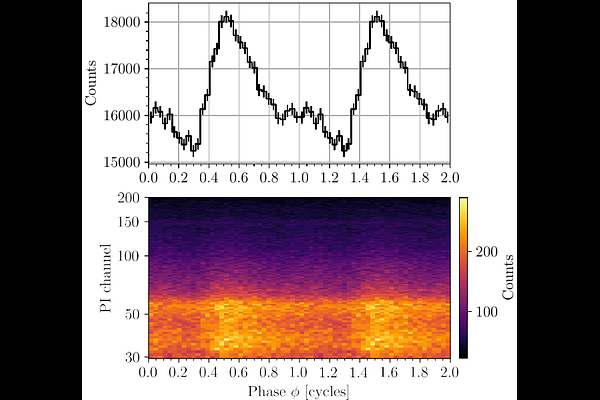A NICER view of the 1.4 solar-mass edge-on pulsar PSR J0614--3329

A NICER view of the 1.4 solar-mass edge-on pulsar PSR J0614--3329
Lucien Mauviard, Sebastien Guillot, Tuomo Salmi, Devarshi Choudhury, Bas Dorsman, Denis González-Caniulef, Mariska Hoogkamer, Daniela Huppenkothen, Christine Kazantsev, Yves Kini, Jean-Francois Olive, Pierre Stammler, Anna L. Watts, Melissa Mendes, Nathan Rutherford, Achim Schwenk, Isak Svensson, Slavko Bogdanov, Matthew Kerr, Paul S. Ray, Lucas Guillemot, Ismaël Cognard, Gilles Theureau
AbstractFour neutron star radius measurements have already been obtained by modeling the X-ray pulses of rotation-powered millisecond pulsars observed by the Neutron Star Interior Composition ExploreR (NICER). We report here the radius measurement of PSR J0614$-$3329 employing the same method with NICER and XMM-Newton data using Bayesian Inference. For all different models tested, including one with unrestricted inclination prior, we retrieve very similar non-antipodal hot regions geometries and radii. For the preferred model, we infer an equatorial radius of $R_{\rm eq}=10.29^{+1.01}_{-0.86}\,$km for a mass of $M=1.44^{+0.06}_{-0.07} \, M_{\odot}$ (median values with equal-tailed $68\%$ credible interval), the latter being essentially constrained from radio timing priors obtained by MeerKAT. We find that, for all different models, the pulse emission originates from two hot regions, one at the pole and the other at the equator. The resulting radius constraint is consistent with previous X-ray and gravitational wave measurements of neutron stars in the same mass range. Equation of state inferences, including previous NICER and gravitational wave results, slightly soften the equation of state with PSR J0614$-$3329 included and shift the allowed mass-radius region toward lower radii by $\sim 300\,$m.